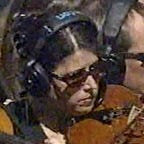When discourses gather at the site of trauma … they are gathered around what is unknown
Shelly Rambo’s approach to integrating theology and psychology focuses on what is read “in between” the two disciplines, rather than what one or the other discipline can add to one another. It is not, however, the integration of the two disciplines or dialogue that is most important in her mind. Instead, it is convergence at the intersection that is vital, but instead of a meeting of roads or paths (which comes to mind when we hear “intersection”) she seems to picture something of a gathering, more like a campfire. The flames draw us to the center where the dark and the light mix in our imagination.
It is no mistake that she calls this meeting “at the site of trauma” a gathering around “what is not known.” As she argues, “The language of theology and the language of trauma theory find resonance around this unknowing” (44). Her specific methodology for this is what is called “double reading.” This is an intuitive space where reading disciplines side-by-side helps us to read beyond our assumptions and set categories. Rambo gets this idea from Grace Jantzen, as she explains below:
In Becoming Divine: Towards a Feminist Philosophy of Religion, theologian Grace Jantzen articulates a way of reading between the lines of Christian theology. These familiar lines are often scripted according to a binary, oppositional logic that excludes certain truths from being told. Jantzen enacts a process of “double reading” that defamiliarizes and disorients readers from these texts, in an attempt to draw attention to the gaps in reading. This process of reading disrupts the binary logic and makes room for new forms of language. Jantzen identifies it as a new imaginary. Although she is not offering this specifically in relationship to trauma, this way of reading is consistent with the lens of trauma as I employ it here. This way of reading reflects the salient and keenest insights of deconstruction and poststructuralism; these approaches to reading texts aim to disconnect us from familiar logic and patterns of reading while simultaneously displaying a “surplus” emerging within the process of reading. The challenge of reading the middle is that it escapes familiar logic and is always in danger of being consumed or silenced by it. Enacting the double reading proposed by Jantzen becomes away of witnessing to what often goes unwitnessed. At its best, this practice of reading is consonant with what I understand to be the difficult task of witnessing to what exceeds the boundaries of death (11–12).
Thus, this “reading in the middle” helps us to cultivate a theoretical location that allows us to witness the “surplus” of human experience that “often goes unwitnessed” within our discourse — whether theological or psychological. In other words, when we gather at this middle site, we can begin the hard work of developing new language and metaphors (what Jantzen calls “a new imaginary”) for remaining at the site of trauma.
Nurturing conversation around the new imaginary is what I feel compelled to do. Like a blazing fire on a cold evening, we are drawn to the warmth and the light. In this circle, we can see one another’s faces and hear each other’s stories. Though darkness surrounds this new imaginary, the light penetrates the gloom and the anxious shadows of our minds. Even if our sorrow and fear keep us quiet as we gather around this center, at least we become a community that sees and is seen by others. The fierce alienation of our shame is known and witnessed to, not necessarily by profound words or edifying wisdom but, instead, by other bodies and stories capable of illuminating the deepest and most hidden corners of our sorrow and heartbreak. This embodied witness holds us as we heal and bear witness to the surrounding darkness that we will not be overwhelmed or defeated. As it says at the beginning of the Gospel of John: “In the beginning was the Word, and the Word was with God, and the Word was God. He was with God in the beginning. Through him all things were made; without him nothing was made that has been made. In him was life, and that life was the light of all mankind. The light shines in the darkness, and the darkness has not overcome [or understood] it.”
May the light shine on this and every day!
Rambo, Shelly, Spirit and Trauma: A Theology of Remaining, Westminster John Knox Press, Kindle Edition, 2011.
